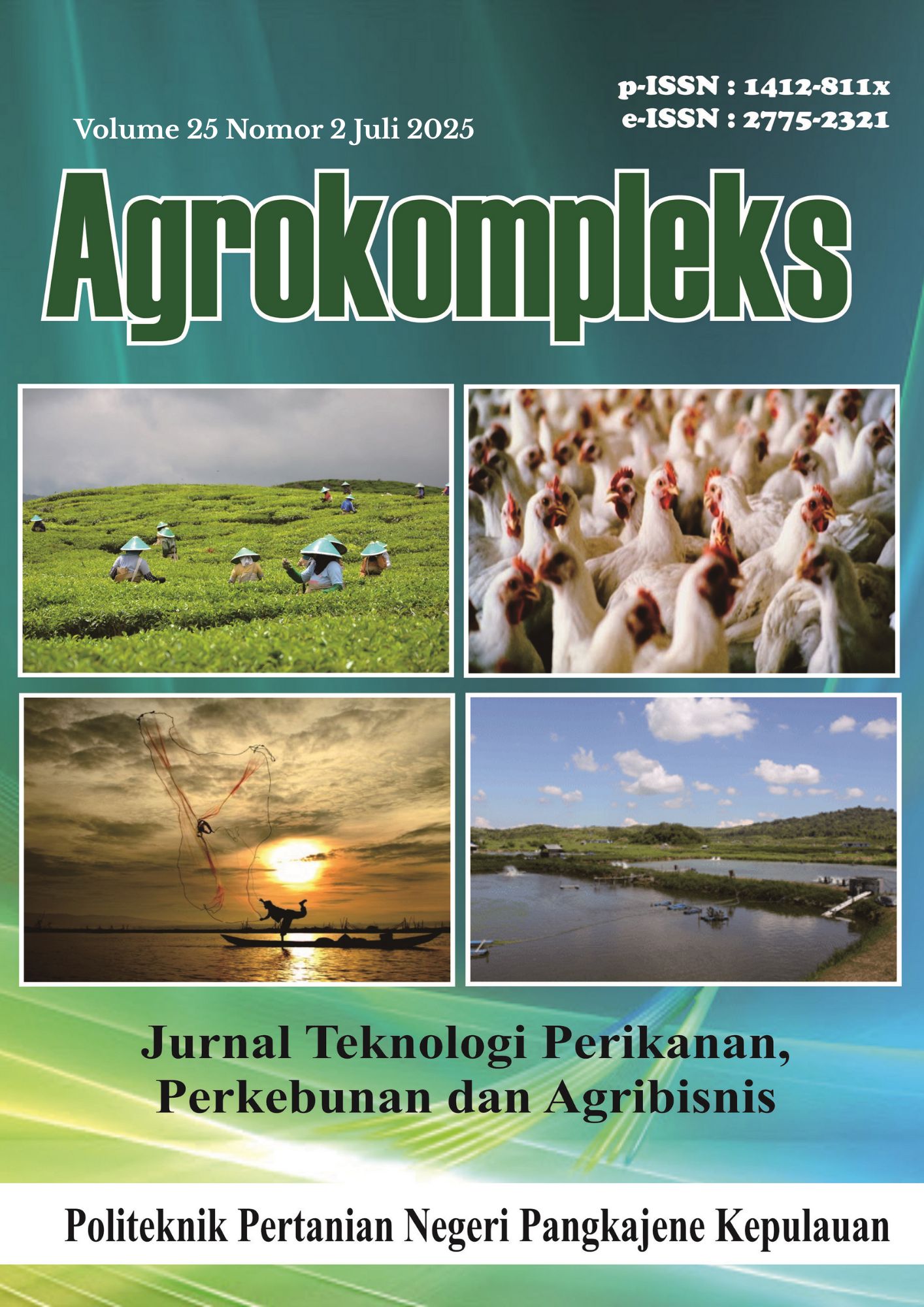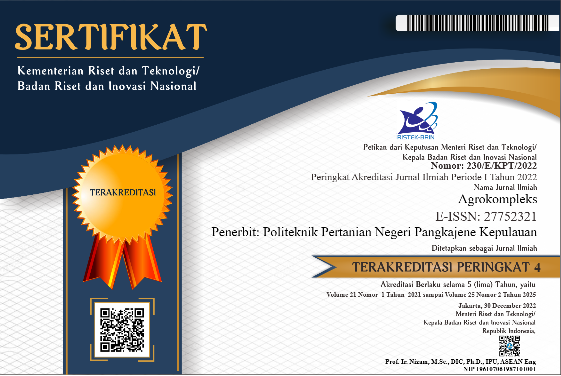Kemampuan antibakteri daun rambutan (Nepheliium lappaceum Linn) terhadap bakteri Vibrio sp. secara in vitro
In vitro antibacterial activity test of ethanol extract of rambutan leaves (Nephelium lappaceum Linn.) against Vibrio sp.
Abstract
Vibrio sp. is an opportunistic pathogenic bacterium that causes vibriosis in fish, shrimp, and seaweed. The use of synthetic antibiotics is everyday; however, resistance is difficult to prevent. The advantages of using natural antibiotics include their availability, environmental friendliness, and cost-effectiveness. This study aimed to utilize a natural material, namely rambutan (Nephelium lappaceum L.) leaf extract, as a candidate to be tested for its antibacterial activity against Vibrio sp. A phytochemical analysis of the rambutan leaf extract was conducted to identify the presence of bioactive compounds that inhibit bacterial growth. The extraction was performed through maceration using 70% ethanol as the solvent. The extract was then diluted in a series of concentrations ranging from 100% to 3.125%. Antibacterial activity was tested using the disk diffusion method on Thiosulfate Citrate Bile Salt Sucrose (TCBS) agar medium. The results showed a potent inhibitory effect at the 100% extract concentration, with an inhibition zone diameter of 24.675 ± 0.53 mm. Potent inhibition was also observed at 75% and 50% extract concentrations, with inhibition zones of 19.95 ± 1.56 mm and 19.225 ± 4.63 mm, respectively. Phytochemical analysis of the rambutan leaf extract revealed the presence of several bioactive compounds, including alkaloids, steroids, flavonoids, saponins, and tannins. The study concluded by calculating the extract yield to assess the efficiency of rambutan leaf extraction using ethanol, yielding 7.16 ± 0.14%.
Copyright (c) 2025 Agrokompleks

This work is licensed under a Creative Commons Attribution 4.0 International License.






